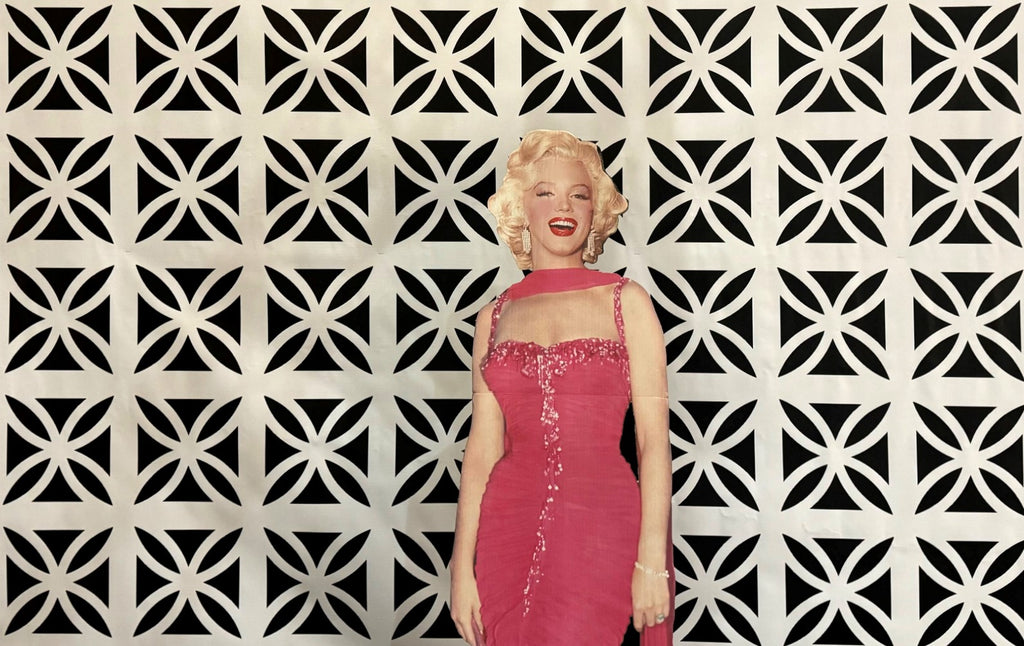
Breeze blocks, with their geometric patterns and architectural charm, have been a timeless choice for photographers seeking a distinctive backdrop. Marilyn Monroe's photoshoot in 1962 beautifully demonstrated the versatility of these blocks. The Sunflower Breeze Block wall not only provided a striking visual contrast but also complemented the radiant beauty of Monroe on that beautiful and sunny day.
The photographer, George Barris, skillfully framed Monroe against the Sunflower Breeze Block wall, immortalizing the moment in a series of images that showcased both the actress's ethereal beauty and the timeless appeal of the chosen backdrop. The result was a visual symphony, where Monroe's glamour resonated harmoniously with the geometric patterns of the breeze blocks.
Adding another layer of sophistication to the shoot was Monroe's choice of attire – designer Pucci clothing. Renowned for its vibrant colors, Pucci's creations perfectly harmonized with the mid-century aesthetic of the breeze block wall. Monroe effortlessly blended style and grace, creating an iconic fusion of fashion and architecture.
Monroe's affinity for the breeze block wall highlighted a global trend that persists to this day. From fashion influencers to photographers seeking the perfect canvas, breeze blocks continue to captivate creative minds across diverse backgrounds. Their ability to effortlessly elevate any scene has made them a symbol of enduring style and a go-to choice for those who seek a touch of mid-century authenticity.
Marilyn Monroe's 1962 photoshoot against the Sunflower Breeze Block wall in the Hollywood Hills remains a testament to the power of blending style, architecture, and nature. In a world where trends come and go, the allure of breeze blocks endures, offering a timeless canvas for those who dare to infuse their creations with a touch of mid-century charm. Monroe's magnetic presence against the Sunflower Breeze Block wall stands as a timeless reminder of the everlasting marriage between glamour and architecture.
Marilyn Monroe, born Norma Jeane Mortenson, transcended her challenging early life, marked by foster homes and an orphanage, to become an enduring symbol of Hollywood's golden era. Renowned for her portrayal of comic "blonde bombshell" characters, Monroe's films grossed $200 million by her untimely death in 1962, securing her status as a sex symbol and emblem of the sexual revolution. Despite facing scandals, including the revelation of pre-stardom nude photographs, Monroe's career thrived, and she navigated her image strategically. A trailblazer, she established her film production company in 1954 and immersed herself in method acting. Her life, punctuated by high-profile marriages and struggles with addiction, ended tragically at the age of 36 with an overdose, leaving behind an enduring legacy as a pop culture icon and the sixth-greatest female screen legend, according to the American Film Institute.
George Barris, an American photographer and photojournalist, achieved fame for his captivating images of Hollywood stars, particularly Marilyn Monroe. Born in New York City to Romanian parents, Barris developed a passion for photography early in life, working for the U.S. Army's Office of Public Relations during his youth and capturing notable figures like General Dwight D. Eisenhower. Transitioning to freelance photography in post-war Hollywood, Barris gained recognition for his shots of iconic figures from the 1950s and 1960s, including Elizabeth Taylor, Marlon Brando, Charlie Chaplin, Frank Sinatra, Clark Gable, and Steve McQueen. However, Barris is most renowned for his intimate and iconic series of photographs featuring Marilyn Monroe, taken in 1954 during the filming of The Seven Year Itch, and in 1962 at Santa Monica beach and the Hollywood Hills, famously known as "The Last Photos." Barris was collaborating on a book about Monroe titled Marilyn: Her Life In Her Own Words at the time of her death in 1962, and he is notably recognized for capturing the last photo of Monroe on July 13, 1962.

